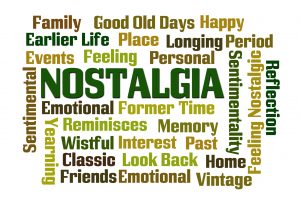This website uses cookies so that we can provide you with the best user experience possible. Cookie information is stored in your browser and performs functions such as recognising you when you return to our website and helping our team to understand which sections of the website you find most interesting and useful.

Susan E. Mazer, Ph.D. Blog
Thoughts and ideas on healthcare
Hi, and welcome to my blog! I'm Susan E. Mazer -- a knowledge expert and thought leader on how the environment of care impacts the patient experience. Topics I write about include safety, satisfaction, hospital noise, nursing, care at the bedside, and much more.
Music for the Elderly: The Dark Side of Nostalgia
March 4, 2016
 The neurological benefits of music for the elderly with dementia have been well documented. The phenomenon of elderly stroke patients with aphasia (not being able to speak, but being able to sing) has also been studied.
The neurological benefits of music for the elderly with dementia have been well documented. The phenomenon of elderly stroke patients with aphasia (not being able to speak, but being able to sing) has also been studied.
At the same time, the kind of music provided at senior living communities is often selected based on the projected values, and is unrelated or insensitive to the unique life experiences of the residents.
Music may exist in its generic form as a topic of discussion, or an overall label for an industry. However, music, to those who listen — voluntarily or otherwise — is personal.
In fact, it is so personal and so present that each listener is afforded the right to complain, enjoy, ignore, judge, stay, or leave.
Entire industries have been built on the understanding that music is a basic need for human beings to thrive. The billion-dollar economics behind the music industry points to that.
At the same time, the music industry markets its products by genres that are based on demographics: age, culture, generation, and socio-economics.
Applying the same rationale to music playlists at senior living communities carries high risk. First, community living, by its very nature, puts diverse individuals together.
Think About All the Factors
If the common denominator is age, then all other factors are at play. The factors that are ignored, however, are those that carry the most weight: meaning, relevance, and personal history.
In 2013, Clay Routledge wrote about the “rehabilitation of old emotions” specifically looking at nostalgia. He examines the history of the term, which Webster defines as “a wistful or excessively sentimental yearning to return to some past period or irrecoverable condition.”
In the past, this term was defined as a disease, a mental disorder. Sentimentality, it was thought, led to depression. And, the longing for what is no longer possible can cause sadness, trigger grieving, and cause emotional angst.
Routledge, goes on to point out that shared reminiscing can feel good and can be positive, especially in a social situation. Sharing memories together can be uplifting, but not having others to share with can depressing.
The question here is the context into which emotional recollection occurs. Picture an elderly couple in an assisted living facility. They love a particular song. When they hear it together, it is wonderful. Then, the husband dies.
The music that this new widow once loved now brings on tears and sadness. In time, her deep sorrow may lighten, but now where she lives, this song is unkind to her.
Our Music Strategy
When we began producing The C.A.R.E. Channel, we were very concerned about providing music and nature images to an audience we did not know. Therefore, we decided to do what we could to avoid even the chance that a familiar song or melody would trigger an uncomfortable emotional response.
So, we use original instrumental music that is listenable and may sound familiar, but is not familiar. For those who spend a long time in hospital or long-term care facility, The C.A.R.E. Channel music will become familiar, but not because of a past association, but rather because of how it makes the environment feel.
Nostalgia can feel good and sad, and can be bittersweet. Using “oldies but goodies” recordings may be good for a specific group for a determined length of time or a specific occasion or celebration. Melancholy, sentimentality, a longing for days past, and the acute awareness that what was can be no more is the dark side of nostalgia.
And, experiencing the past in the present is even more difficult when elderly people are alone in a hospital room or long-term care facility. We need to be sensitive to their situation and provide a comforting, supportive environment.
To sum it up, when creating a healing environment for the elderly, music selection should be based on more than just familiarity. That’s not to say that providing music from the past is always bad, but for many reasons, it should not be the only experience offered.
P.S. If you like this post, please do me a favor and share on LinkedIn, Twitter, Facebook, etc. Also to get automatic notices when a new post is published, subscribe (upper right). No spam – just great content. Thanks!










